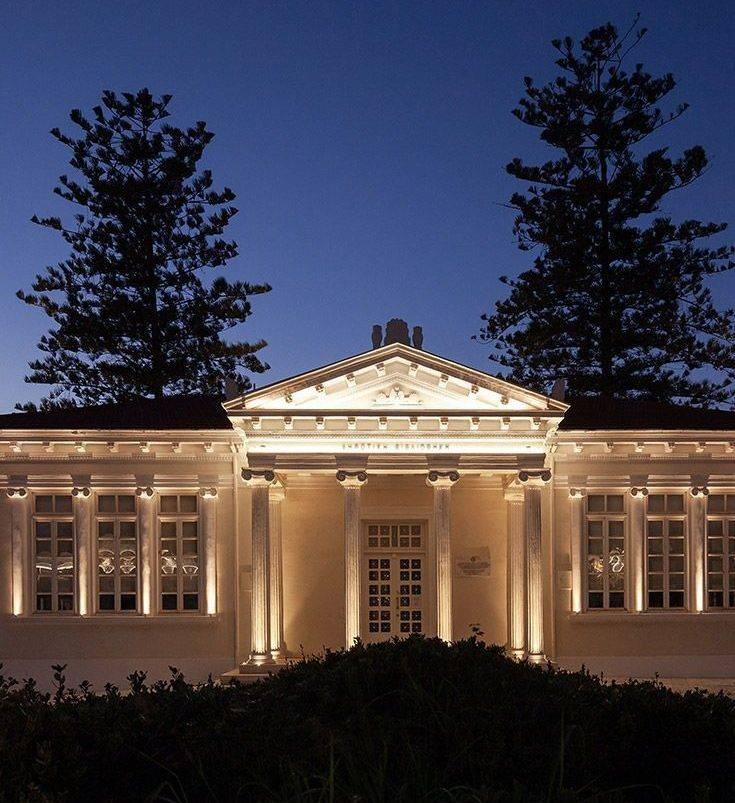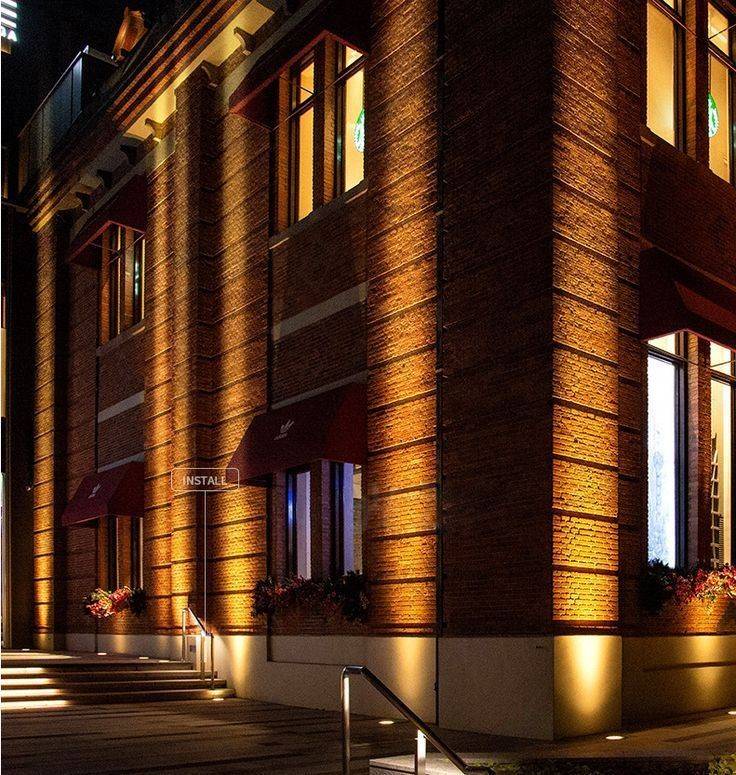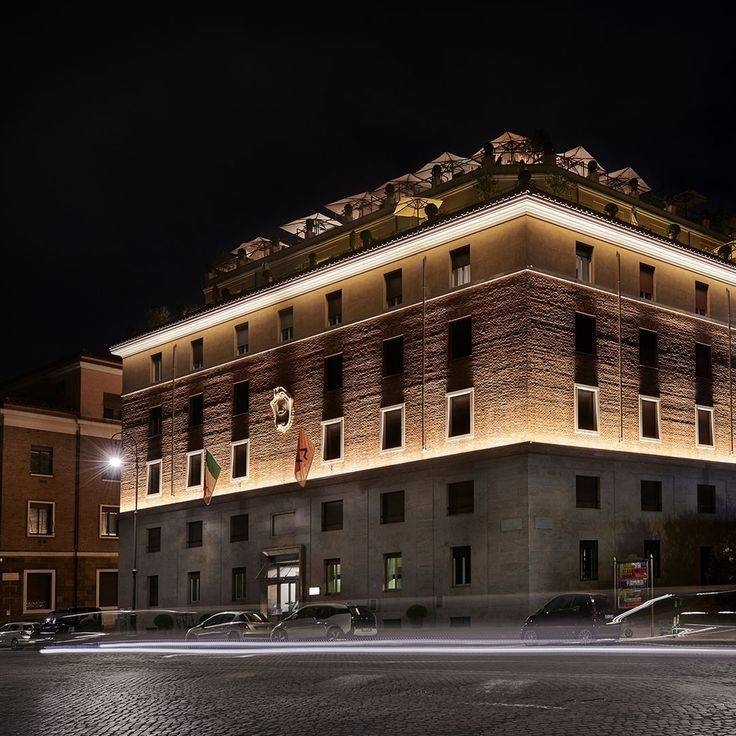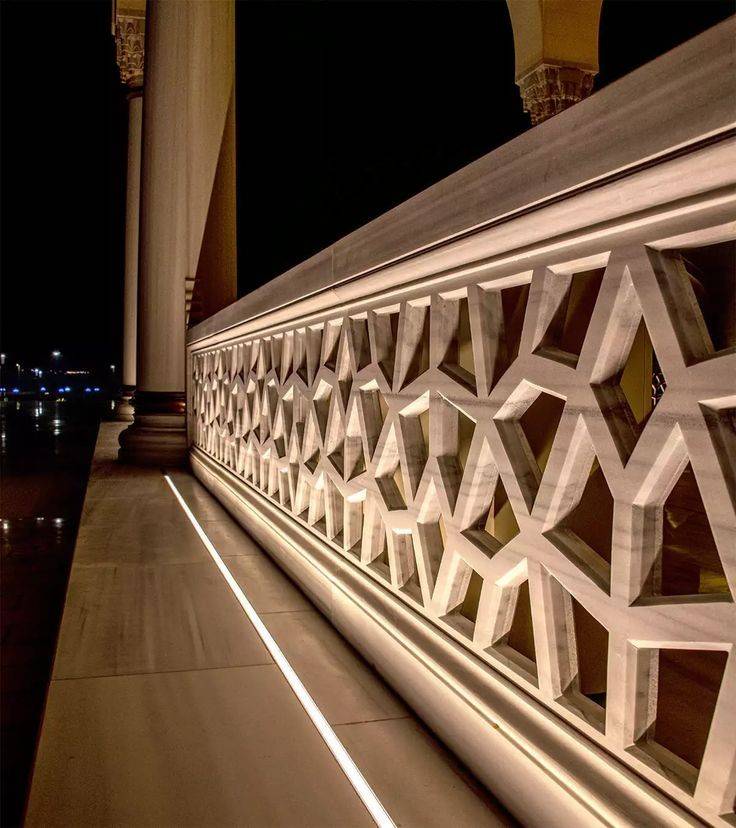Building Lighting
Building lighting is one of the most important aspects of modern architectural design. It helps create a beautiful, functional, and unique appearance for both the building facade and its surrounding environment. The principles of building lighting not only enhance the aesthetic experience but also improve the space’s functionality and positively impact energy consumption. Lighting, beyond merely providing illumination, acts as an artistic and engineering tool to highlight architectural features and create unique visual effects. This process, in addition to improving beauty, security, and the nighttime functionality of a building, can also give a structure a distinct identity and personality. By leveraging advanced techniques and technologies, such as smart systems and energy-efficient LED lights, lighting can offer a lasting experience tailored to environmental and cultural needs. For this reason, professional building lighting design, from residential homes to historical and commercial buildings, has become one of the fundamental pillars of architecture.

Effects of Building Lighting
Building lighting has multiple effects that go beyond aesthetics, playing a crucial role in functionality, emotions, and performance. Here are the most significant impacts of building lighting:
- Enhancing Beauty and Visual Appeal
- Highlighting Architecture: Proper lighting can emphasize architectural lines, textures, and design details, making the building look more attractive at night.
- Creating Artistic Effects: Using various lighting techniques and colors can transform a building into a striking work of art.
- Influencing Emotions and Perception
- Establishing Identity: Unique lighting can give a building a distinct character, setting it apart from others.
- Psychological Effects: The color and intensity of light affect human emotions. Warm lighting creates a cozy and relaxing atmosphere, while cool lighting conveys freshness and modernity.
- Improving Safety and Security
- Better Nighttime Visibility: Proper lighting for pathways, entrances, and building surroundings reduces the risk of accidents or crime.
- Sense of Presence: Well-lit buildings provide a stronger sense of presence and security for residents and pedestrians.
- Enhancing Urban Identity
- Creating Landmarks: Buildings with unique lighting can become city landmarks and contribute to urban beautification.
- Environmental Harmony: Well-coordinated lighting with other urban elements creates a visually appealing and cohesive cityscape.
- Optimizing Energy Consumption
- Using Energy-Efficient Technologies: Modern lighting systems with LED lamps and smart controls reduce energy consumption and promote environmental sustainability.
- Smart Scheduling and Control: Automated management of lighting intensity and duration minimizes unnecessary energy use.
- Economic Benefits
- Increasing Property Value: Buildings with professional and attractive lighting often have higher market value.
- Attracting Customers: In commercial and retail spaces, appealing lighting can attract more customers.
- Reflecting Building Functionality
Lighting can indicate the purpose of a building:
- Commercial Buildings: Vibrant and dynamic lighting to draw attention.
- Residential Buildings: Warm and soothing lights for a comfortable ambiance.
- Cultural Venues: Subtle and artistic lighting for an elegant atmosphere.
Application of Lights in Building Lighting
The use of lights in building lighting depends on the type of space and the purpose of illumination. Below are the main lighting methods and their applications:
- Ambient Lighting
This type of lighting provides general illumination for an entire room and serves as the foundation of any lighting design. Ceiling fixtures, chandeliers, and fluorescent lamps are commonly used for ambient lighting.
- Task Lighting
Task lighting is designed for specific activities such as reading, cooking, or office work. Desk lamps, pendant lights, and under-cabinet lights are ideal for focused illumination.
- Accent Lighting
Accent lighting highlights specific objects or architectural features, such as artwork, sculptures, or textured walls. Recessed lights, wall-mounted fixtures, and spotlights are commonly used for accent lighting.
- Decorative Lighting
This type of lighting enhances the aesthetic appeal of a space, creating visual interest and elegance. Chandeliers, ornamental lamps, and hidden LED strip lighting are often used for decorative effects.
- Outdoor Lighting
Outdoor lighting is used to illuminate external spaces, including gardens, courtyards, and building facades. Garden lights, landscape lighting, and outdoor floodlights help enhance security and aesthetics.
- Emergency Lighting
Emergency lighting ensures visibility during power outages or hazardous situations. It includes emergency exit signs, backup lighting systems, and safety lamps.
- Smart Lighting
Smart lighting integrates automation and remote control, allowing users to adjust brightness, color temperature, and timing. Smart bulbs and automated lighting systems enhance convenience and energy efficiency.
Proper vs. Improper Lighting Design
Lighting, when implemented correctly, enhances beauty, security, and functionality. However, improper lighting can fail to achieve these goals and may even cause various issues. Below are the key differences between proper and improper lighting design:
Features of Proper Lighting Design
- Harmony with Architectural Design
- Lighting should complement the architectural features of a building and highlight its lines and details.
- It creates desirable visual effects, such as depth and emphasis.
- Use of Appropriate Fixtures
- High-quality, durable lighting fixtures resistant to environmental conditions (humidity, heat, dust).
- Energy-efficient light sources (such as LED) to reduce energy consumption.
- Balanced Light Intensity
- Proper lighting avoids overly bright or dark areas, ensuring uniform illumination.
- Prevents direct glare that may cause discomfort.
- Proper Color Temperature Selection
- Light color (warm or cool) is chosen based on the space’s function.
- Creates the right ambiance (warm light for relaxation, cool light for focus).
- Avoidance of Light Pollution
- Proper lighting directs light only where needed, preventing unnecessary light dispersion and pollution.
- Alignment with Functional Needs
- Lighting design is tailored to the space’s purpose, whether residential, commercial, or cultural.

Common Issues in Improper Lighting Design
Lack of Harmony with Architecture
- Using inappropriate light sources that make the building look unorganized and unprofessional.
- Placing emphasis on areas that do not contribute to the architectural appeal.
Use of Low-Quality Equipment
- Non-standard fixtures that degrade quickly or consume excessive energy.
- Risk of damage or malfunction due to environmental conditions.
Inappropriate Light Intensity
- Overly intense lighting that causes eye strain or glare.
- Insufficient lighting that makes the space feel dark and uninviting.
Incorrect Light Color Selection
- Using unsuitable colors (e.g., overly cool lights in relaxation areas).
- Imbalanced color combinations that create a sense of visual discomfort.
Light Pollution
- Directing light towards the sky or surrounding areas instead of focusing on the building.
- Causing disturbances for residents or neighboring structures.
Lack of Energy Efficiency
-
- Using high-consumption, non-economical lighting sources.
- Failing to incorporate smart technologies for energy management.
Results of Proper and Improper Lighting Design
| Aspect | Proper Lighting Design | Improper Lighting Design | ||
|---|---|---|---|---|
| Aesthetics |
|
|
||
| Functionality |
|
Creates unwanted shadows or insufficient lighting | ||
| Energy Efficiency | Reduces energy consumption and costs | Leads to excessive consumption and higher expenses | ||
| User Experience | Promotes a sense of relaxation, security, and satisfaction | Causes discomfort, fatigue, or visual confusion | ||
| Environmental Impact | Minimizes light pollution | Increases light pollution and harms the environment |
Key Principles of Proper Building Lighting
To achieve a visually appealing, functional, and efficient lighting design, consider the following essential principles:
- Harmony with Architectural Design
- Lighting should complement the building’s architecture, emphasizing key features such as lines, textures, and details.
- Techniques like concealed or linear lighting can highlight specific elements effectively.
- Choosing the Right Equipment
- Use high-quality lighting fixtures that are durable and resistant to environmental conditions (e.g., waterproof and dustproof lights).
- Opt for energy-efficient solutions like LED lights to reduce energy consumption and costs.
- Proper Light Intensity and Distribution
- Light intensity should be balanced to avoid overly bright or dark areas.
- Ensure uniform light distribution and prevent the formation of unpleasant shadows.
- Selecting the Appropriate Light Color
- Warm lights (3000K–4000K) are ideal for residential and relaxing environments.
- Cool lights (5000K and above) are suitable for commercial buildings and workspaces.
- A mix of colors can be used in cultural or entertainment buildings to create special visual effects.
- Preventing Glare
- Light fixtures should be positioned to avoid direct glare.
- Use lenses or diffusers to control light intensity and direction.
- Reducing Light Pollution
- Focus light on the intended areas and avoid unnecessary light spillage.
- Prevent excessive upward lighting or directing light into nearby windows.
- Utilizing Advanced Technologies
- Smart lighting systems can control intensity, color, and scheduling for optimal efficiency.
- Motion and daylight sensors help reduce unnecessary energy consumption.
- Ensuring Safety and Security
- Provide adequate lighting for entrances, staircases, and parking areas to prevent accidents.
- Proper exterior lighting enhances security and reduces the risk of break-ins.
- Considering Building Functionality
- Commercial buildings: Eye-catching and creative lighting to attract customers.
- Residential buildings: Soothing and simple lighting for comfort.
- Cultural buildings: Artistic lighting that aligns with the building’s purpose.

 English
English العربية
العربية


















